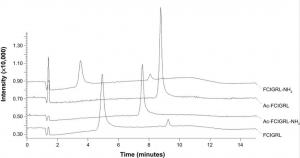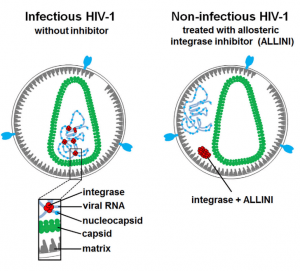Zonula occludens toxin (Zot) and its biologically active fragment, delta G, have been shown to reversibly open tight junctions (TJ) in endothelial and epithelial cells. AT1002, a six-mer synthetic peptide H-FCIGRL-OH of ZO toxin, was identified and synthesized to retain the Zot permeating effect on intercellular TJ. It was found that AT1002 disrupts the epithelial barrier while larazotide acetate restores barrier function by rearrangement of actin. In addition, AT1002 enhances the transport of molecular weight markers or agents with low bioavailability with no cytotoxicity. So, this synthetic peptide AT1002 is a tight junction modulator with promising permeation-enhancing activity.
A Synthetic Peptide Showed Enhanced Nasal Drug Delivery
The C-terminal amidated AT1002 FCIGRL-NH2 showed enhanced nasal drug delivery and may lead to the development of a practical drug delivery technology for drugs with low bioavailability.
LifeTein synthesized the synthetic peptide AT1002.

Peptide amidation
https://bmcbiol.biomedcentral.com/articles/10.1186/s12915-018-0481-z
https://www.ncbi.nlm.nih.gov/pmc/articles/PMC4383222/





